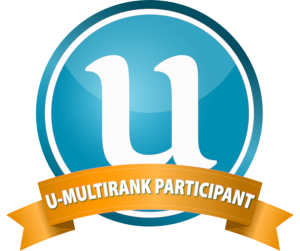Physiology of Physical Activities (LSPA_180)
About Study Course
Prerequisites
Study courses mastered: Teacher’s Professional Skills, Civil Protection, State Security and Environmental Protection for Sustainable Development, Teaching and Learning in the Context of Diversity, Business and Accounting, Educational Psychology for Teachers, Biomechanics and Ergonomics, Human Anatomy and Dynamic Anatomy, Management of Educational Institution, Foundations and Methodology of Obstacle Overcoming, Foundations and Methodology of Moving Objects, Foundations and Methodology of Moving, Inclusive and Special Sports Education, Health Promoting Physical Activities, General and Physical Activity Biochemistry, General and Age-Specific Physiology, Movement Games, Outdoor Activities: Content and Methodology of Moving with Sports Equipment and/or Sport in Multicultural Environment and Olympic Education, Foundations and Methodology of Swimming, History of Sport, Philosophy of Sport.
Learning outcomes
1.1. To demonstrate comprehensive and sport-specific knowledge of basic and specialised facts, theories, patterns of acute and chronic effects of physical loads of varying duration and intensity on the human body, adaptation of the human body to different external environmental conditions.
2. About bioenergy of muscles, physiological indicators of physical load intensity, functional changes in the body during the conditions specific to sport, functional changes in the body in sports loads of different nature and intensity, and mechanisms for adapting the body to systematic training loads, physiological justification for developing physical characteristics and learning of movement skills, signs of overtraining, characteristics of the body’s capacity to work under different external environmental conditions.
1.1. Skills to determine and interpret physiological indicators, human physical characteristics, the use of these skills in the planning of training and sports classes.
2. To take responsibility and initiative when doing study and laboratory work individually, in a team or managing the work of other people when jointly developing laboratory work.
3. To determine the latent period of simple and complex movement reactions, perform flexibility and balance tests, muscle strength and power tests, measure athletes’ endurance using step tests and load tests on the cycle ergometer, determine the incorporation of circulatory and respiratory systems into physical loads, determine the maximum oxygen consumption by indirect method (pulse rate) by performing a step incremental intensity load on a cycle ergometer.
1.6. Students learn competences to determine physical characteristics indicators and compare with literature data, assess athlete’s degree of cardiorespiratory system training.
7. To use knowledge of sports physiology in practical activity – by drawing up lesson abstracts for sports and health classes, assessing students’ fitness, etc.
Study course planning
| Study programme | Study semester | Program level | Study course category | Lecturers | Schedule |
|---|---|---|---|---|---|
| Health, physical activity and security (sports and health teacher) | 5 | All levels | Required | ||
| Health, physical activity and security (sports, health and national defense teacher) | 5 | All levels | Required | ||
| Health, physical activity and security (sports and health teacher) | 5 | All levels | Required |
| Study programme | Study semester | Program level | Study course category | Lecturers | Schedule |
|---|---|---|---|---|---|
| Health, physical activity and security (sports and health teacher) | 5 | All levels | Required |
| Study programme | Study semester | Program level | Study course category | Lecturers | Schedule |
|---|---|---|---|---|---|
| Health, physical activity and security (sports, health and national defense teacher) | 5 | All levels | Required |



